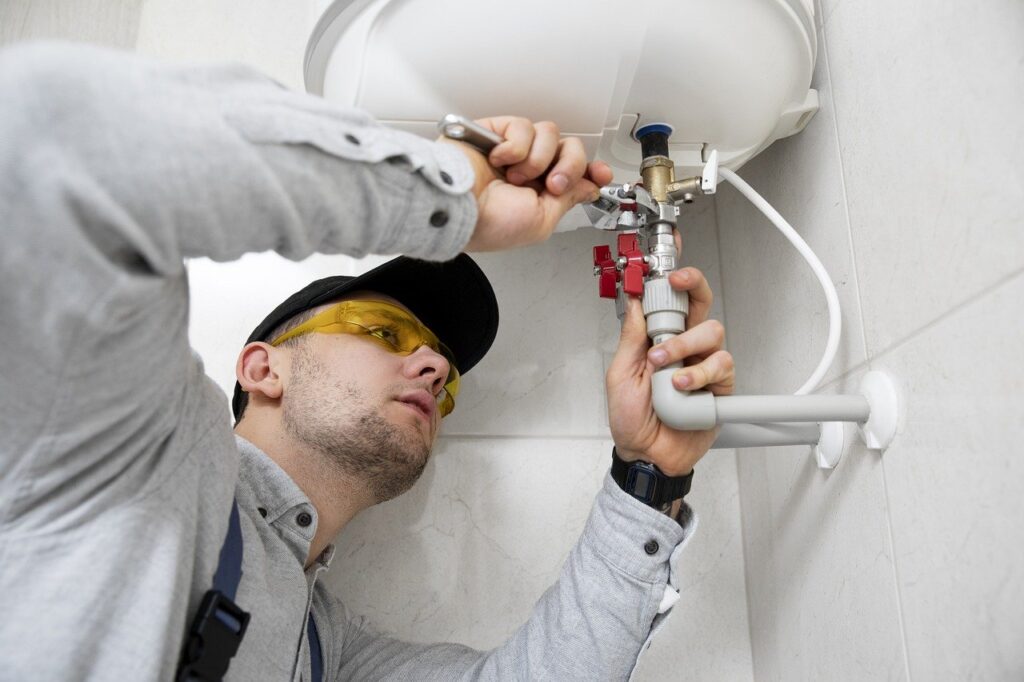Get in Touch with Our Expert Plumbers for Tankless Water Heater Installation in the USA
Tankless water heaters are becoming increasingly popular in the USA due to their efficiency, space-saving design, and the convenience of on-demand hot water. If you’re considering a tankless water heater installation, this guide will walk you through the benefits, installation process, maintenance, and service needs, ensuring you make an informed decision.

Why Choose a Tankless Water Heater?
Tankless water heaters, also known as on-demand water heaters, provide hot water only as needed. Unlike traditional tank heaters that store hot water, tankless systems heat water directly, reducing energy consumption and providing a continuous supply of hot water.
Benefits of Tankless Water Heaters:
- Energy Efficiency: Tankless water heaters can be up to 34% more energy-efficient than traditional tank heaters, especially for homes that use 41 gallons or less of hot water daily.
- Endless Hot Water: Because water is heated on demand, you’ll never run out of hot water, making it perfect for large families or homes with high hot water usage.
- Compact and Convenient: These units are much smaller than traditional heaters and can be wall-mounted, freeing up floor space for other uses.
- Longer Lifespan: Tankless water heaters typically last longer than traditional tank heaters, with an average lifespan of 20 years compared to 10-15 years for tank heaters.
Steps for Tankless Water Heater Installation
Installing a tankless water heater involves several steps, and it’s often best to hire a professional to ensure the job is done correctly. Here’s a quick review of the setting up procedure:
- Assess Your Home’s Hot Water Needs: Determine the peak hot water demand in your home to choose the right size unit. This involves calculating the flow rate and temperature rise needed.
- Select the Right Tankless Water Heater: Choose a unit that matches your home’s requirements. Consider factors such as fuel type (gas or electric), efficiency ratings, and brand reliability.
- Prepare the Installation Site: Select an appropriate location for the unit, typically near the primary usage points to minimize heat loss. Ensure there is proper ventilation and access to fuel and electrical sources.
- Remove the Old Water Heater: If replacing an accessible water heater, safely detach and remove the old unit.
- Install the New Tankless Water Heater:
- Secure the Unit: join the unit to the wall according to the manufacturer’s instructions.
- Hook Up the Water Lines: Connect the incoming cold water and outgoing hot water lines to the unit.
- Connect to Power Source: Attach the gas line for gas units, and plug into the electrical supply for electric units.
- Ensure Proper Ventilation: Make sure gas units have appropriate ventilation to prevent harmful gas buildup.
- Test the System: After installation, conduct a thorough test to ensure the system is operating correctly, checking for any leaks and verifying that the water heats to the desired temperature.
Tankless Water Heater Maintenance
Regular maintenance is crucial to keep your tankless water heater running efficiently and extend its lifespan. Here are some essential maintenance tasks:
- Descale the Unit: Hard water can lead to mineral buildup inside the unit, which can reduce efficiency and potentially cause damage. Filter Maintenance: Frequently inspect and clean the inlet filter to ensure optimal water flow and prevent debris from entering the system.
- Inspect the Venting System: For gas units, inspect the venting system for any blockages or leaks to ensure safe operation.
- Check for Leaks: Regularly inspect the water lines and connections for any signs of leaks or corrosion.
Tankless Water Heater Service and Repair
Despite their reliability, tankless water heaters may occasionally require professional service or repair. Common issues include:
- No Hot Water: This could be due to a variety of reasons such as a tripped circuit breaker, gas supply issues, or a malfunctioning heating element. Seeking professional assistance is advisable for accurately diagnosing and resolving these problems.
- Fluctuating Water Temperature: Inconsistent water temperature can be caused by mineral buildup, incorrect installation, or a faulty sensor.
- Error Codes: Modern tankless water heaters have diagnostic systems that display error codes when there’s a problem. Refer to the manufacturer’s manual to understand the codes and seek professional help if needed.
Tips for Finding Reliable Tankless Water Heater Repair Near Me
When you need repair services for your tankless water heater, it’s essential to find a reliable and experienced professional. Here are some tips:
- Ask for Recommendations: Seek recommendations from friends, family, or neighbors who have used tankless water heater services.
- Check Credentials: Make sure the technicians are certified and have significant experience working with tankless water heaters.
- Request Quotes: Get quotes from multiple service providers to compare prices and services offered.
Conclusion
Installing a tankless water heater in your home can provide numerous benefits, including energy savings, endless hot water, and a compact design. Whether you’re in the installation phase or need maintenance and repair services, understanding the process and knowing when to call a professional can help ensure your tankless water heater works effectively and remains durable for many years.
For all your tankless water heater installation, maintenance, and repair needs, trust the experts to deliver reliable and affordable service. With proper care and professional assistance, you can enjoy the benefits of a tankless water heater for many years.